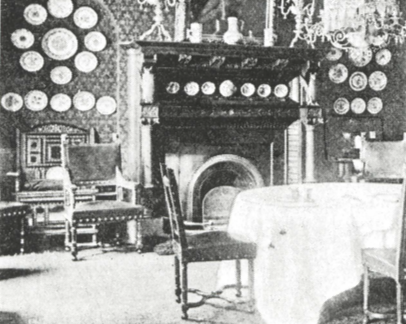Originality and authenticity of textiles artefacts in house-museums
DOI:
https://doi.org/10.14568/cp2018020Keywords:
Decorative textiles, Historical house, Authenticity, Originality, MuseographyAbstract
This article is a result of the Project for the Museographic Renewal of the Rui Barbosa House Museum, in Rio de Janeiro. This approach discusses the introduction of non-original textiles in the museum, since previous research has demonstrated that its environment is partially featureless. From the theoretical point of view, the idea of renewal is supported by the assumption that decorative textiles are necessary to build the narrative in the museum. From this perspective, some reflections are presented here about the originality versus non-originality of the textile typologies inside historical houses.
Received: 2018-6-16
Revised: 2018-10-22
Accepted: 2018-12-11
Online: 2019-2-14
Publication: 2019-4-30
Downloads
References
[1] Halvorson, B., 'Modern replacement fabrics in historic interiors: ethical and practical concerns', in The conservation of Heritage Interiors: Preprints of a Conference Symposium 2000, Canadian Conservation Institute, Ottawa (2000) 107-112.
[2] Van Mensch, P., 'Methodological museology; or, towards a theory of museum practice', in Objects of Knowledge, ed. S. Pearce, The Atholone Press, London (1990) 141-157.
[3] Forty, A., Objetos de Desejo, Cosac Naify, São Paulo (2007).
[4] Jordanova, L., 'Objects of knowledge: a historical perspective on museums', in The New Museology, ed. P. Vergo, Reaktio Books Ltd., London (2000) 22-40.
[5] Jones, S., 'Negotiating authentic objects and authentic selves', Journal of Material Culture 15(2) (2010) 181-203, https://doi.org/10.1177/1359183510364074.
[6] Van Mensch, P. 'Towards a methodology of museology', tese de doutoramento, University of Zagreb, Zagreb (1992).
[7] Porter, J.; MacDonald, S., 'Fabricating interiors: approaches to the history of domestic furnishing at the Geffrye Museum', Journal of Design History 3(2-3) (1990) 175-182, https://doi.org/10.1093/jdh/3.2-3.175.
[8] Donelly, J. F., Interpreting Historic House Museum, Altamira Press, Walnut Creek (2002).
[9] Ferry, K., The Victorian Home, Shire, Oxford (2010).
[10] Schoeser, M., Fabrics and Wallpaper Twentieth-Century Design, E. P. Dutton, New York (1986).
[11] Ponsonby, M., Faded and Threadbare Historic Textiles and Their Role in Houses Open to the Public, Routledge, London and New York (2016).
[12] Droth, M., 'Leighton's House: art in and beyond the studio', Journal of Design History 24(4) (2011) 339-358, https://doi.org/10.1093/jdh/epr038.
[13] Maines, R.; Glynn, J., 'Numinous objects', The Public Historian 15(1) (1993) 9-25, https://doi.org/10.2307/3378030.
[14] Jerome, P., 'An introduction to authenticity in preservation', APT Bulletin 39(2-3) (2008) 3-7.
[15] Gluzinski, W. W., 'Originals versus substitutes', in Symposium Originals and Substitutes in Museums, ICOM, Zagreb (1985) 41-47.
[16] Graham, E., 'History at home: Leighton House, Sambourne House, and the Heritage debate', Grinnell-in-London Internship, Professors Strauber and Vinter (2008).

Downloads
Published
How to Cite
License
This work is distributed under a Creative Commons Attribution License (CC BY-NC-ND 4.0) which permits use, distribution, and reproduction in any medium following no commercial or derivatives, provided the original author and source are credited.
Copyright remains with the authors.






